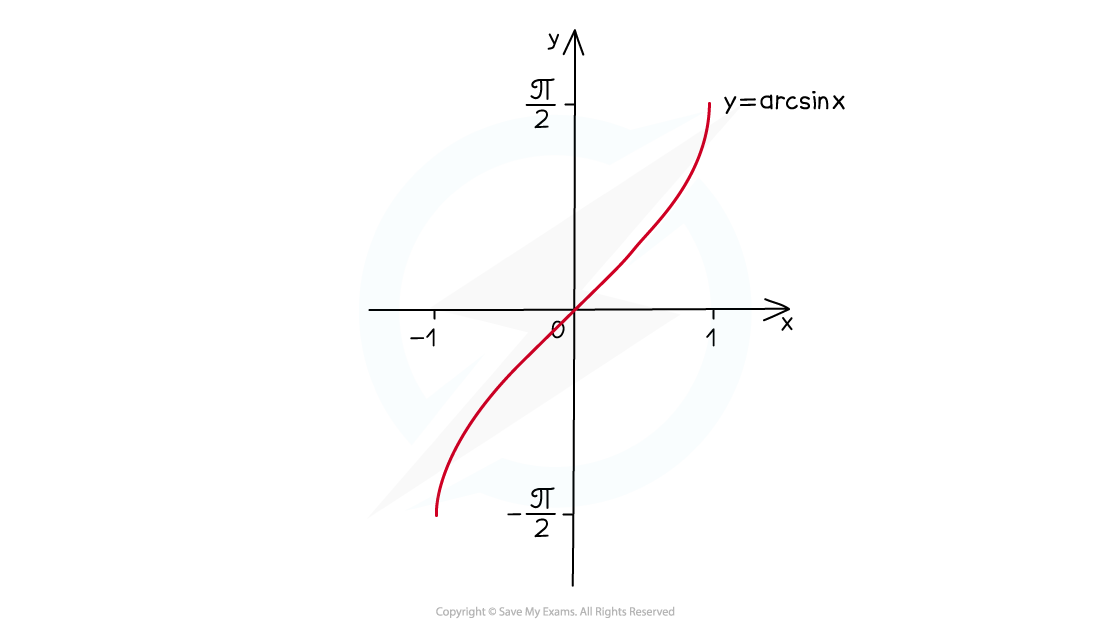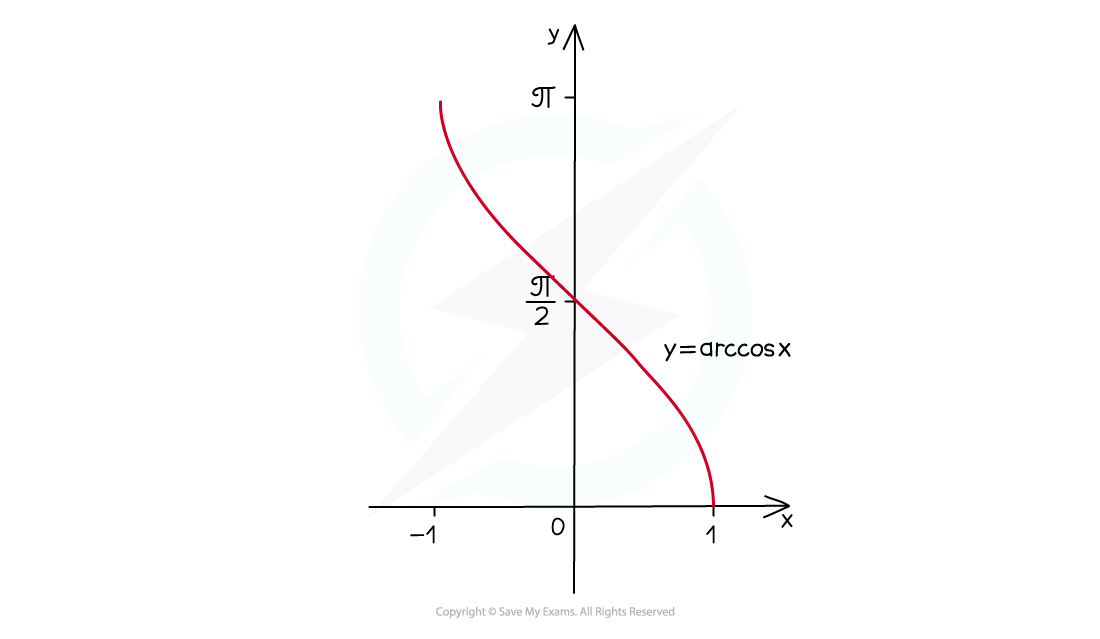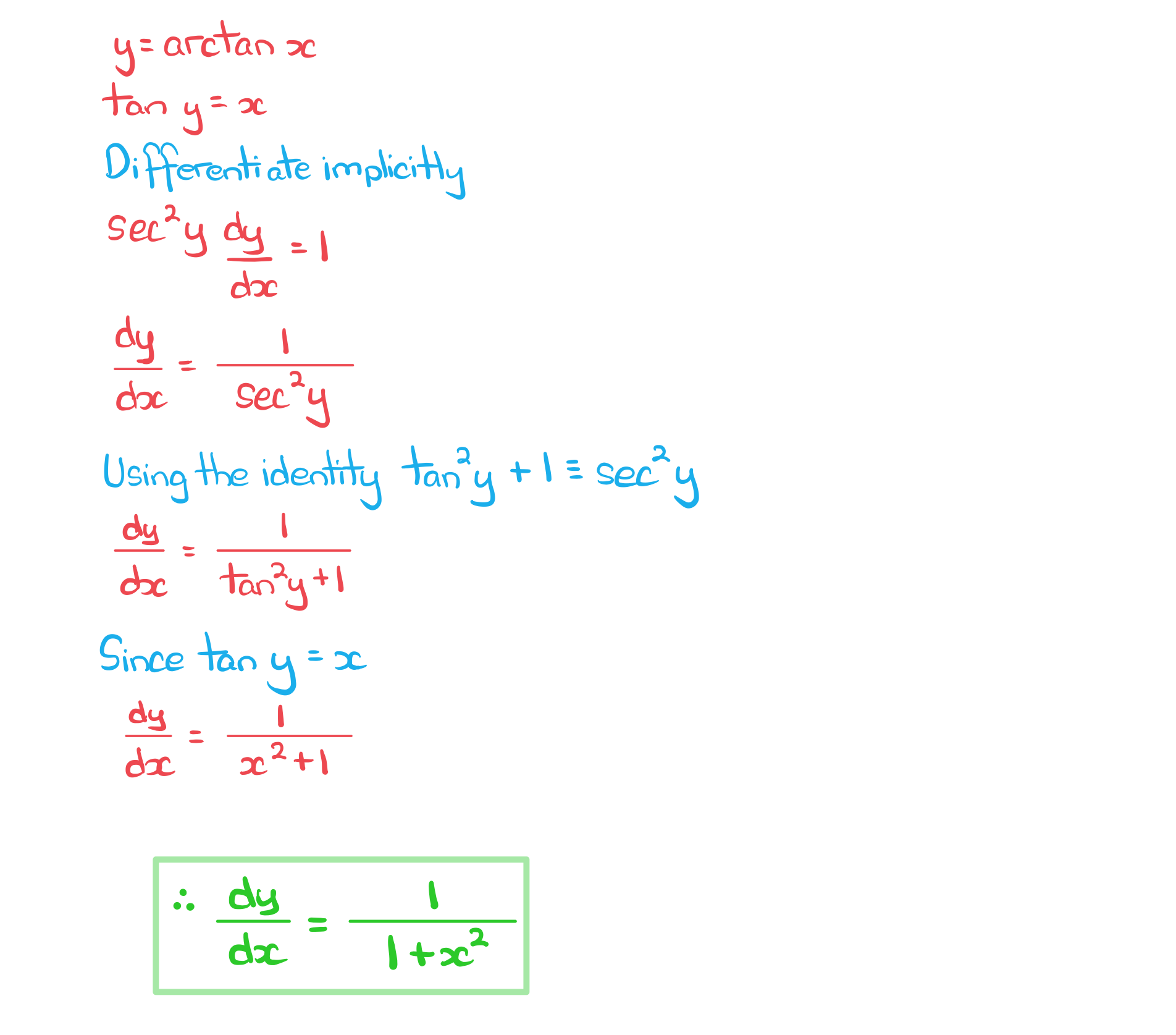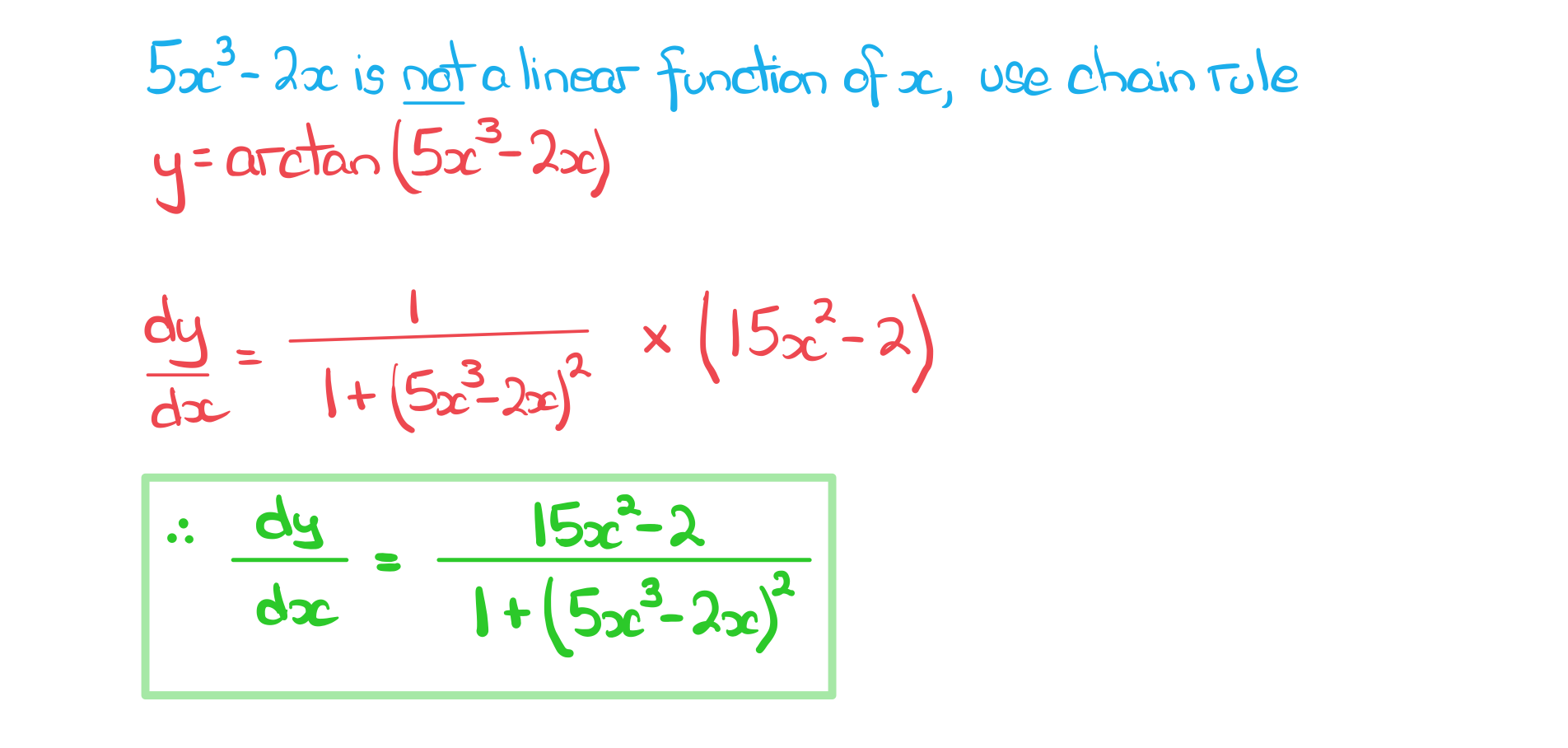Differentiating Inverse Trigonometric Functions (DP IB Analysis & Approaches (AA)): Revision Note
Differentiating inverse trigonometric functions
What are the inverse trigonometric functions?
arcsin, arccos and arctan are functions defined as the inverse functions of sine, cosine and tangent respectively
which is equivalent to
which is equivalent to
What are the derivatives of the inverse trigonometric functions?
Examiner Tips and Tricks
These three derivatives are all given in the exam formula booklet.
Unlike with other derivatives, these functions and their derivatives look completely unrelated at first
Their derivation involves use of the identity
Hence the squares and square roots!
Note with the derivative of
that
is the same as
How do I show or prove the derivatives of the inverse trigonometric functions?
For
Rewrite,
Differentiate implicitly,
Rearrange,
Rewrite using the identity
,
And
, therefore
Similarly, for
For proving the derivative of
, see the Worked Example
Notice how the derivative of
is positive but the derivative of
is negative
This subtle but crucial difference can be seen in their graphs
has a positive gradient for all values of
in its domain
has a negative gradient for all values of
in its domain


What do the derivatives of inverse trig functions look like with linear functions of x?
For linear functions of the form
These are not in the formula booklet
they can be derived from chain rule
they are not essential to remember
they are not commonly used
Examiner Tips and Tricks
For the terms in the denominator can be reversed (as they are being added rather than subtracted):
Don't be fooled by this. It sounds obvious, but in awkward "show that" questions it can be an easy thing to miss!
Worked Example
a) Show that the derivative of is
Answer:

b) Find the derivative of .
Answer:


Unlock more, it's free!
Did this page help you?